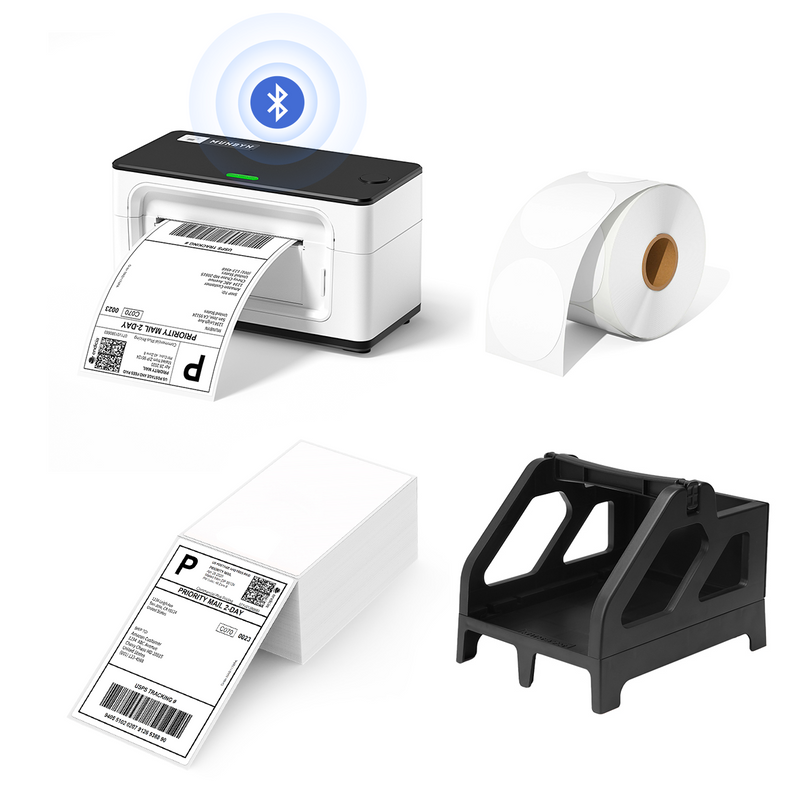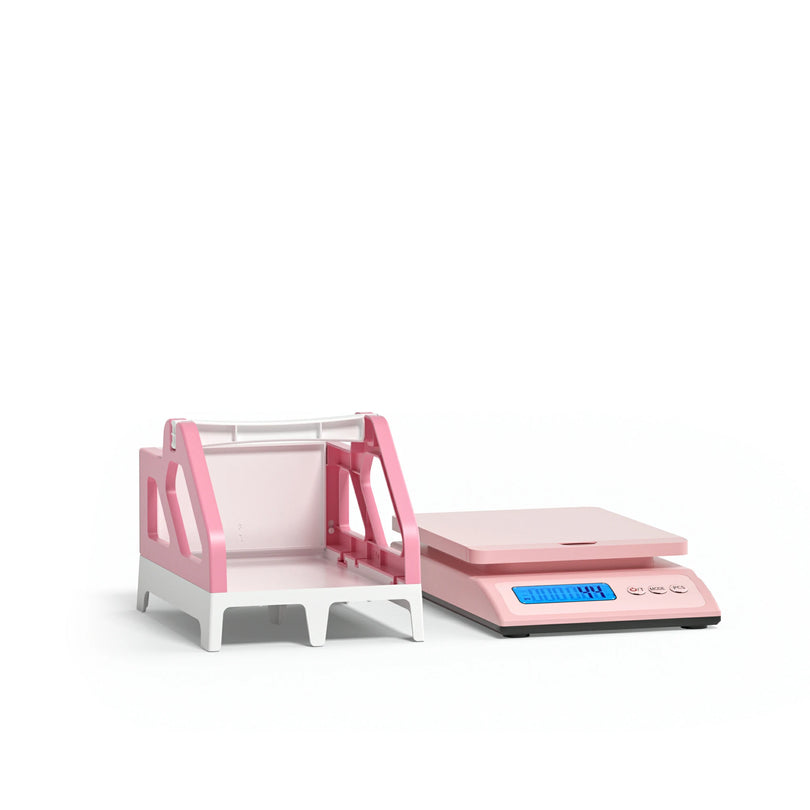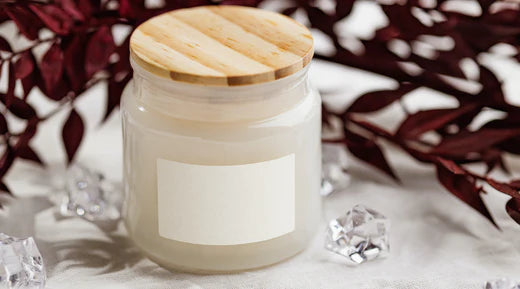Life sure can leave us with a bunch of trouble, huh? (chuckle) One of the annoying and common ones is label and sticker residue. No matter how well you thought you had peeled them off, you find yourself stuck with a messy ring or bits of paper left behind. The good news is removing labels and sticker residue isn't impossible! There are some ways you can make this task easier on yourself while still getting the job done properly.
Nail polish remover
If you're struggling to remove stubborn label or sticker residue, you may want to try using nail polish remover, which contains acetone - a powerful solvent that can dissolve the adhesive used in labels and stickers. However, if you're a Ecommerce seller looking for a more convenient solution that doesn't require any extra cleaning up, you may want to consider using sticker labels that don't leave residue. These labels are a great option for business owners who need to label packages quickly and efficiently without worrying about any sticky residue being left behind.
Heating with a hairdryer
If you have a heat source, like a hairdryer, this could be your best bet. Try using a hair dryer to heat up the label until it loosens up and comes off more easily. This can also be done with an iron or other heat source like a stove burner or curling iron—just be careful not to burn yourself! Be sure that the surface you're working on won't melt under high temperatures or damage from heat exposure.
-
Plug in your hair dryer and turn it on high
-
Hold the hairdryer about six inches from the sticker for about 10 seconds (be careful not to overheat the sticker)
-
Continue heating the sticker until it is soft and looks like it’s starting to come off
White vinegar
Another option is to soak your label in vinegar for about an hour before trying to remove it; this should soften up the adhesive enough that it comes off easily when rubbed gently with water or soft scrubbing pads (like dish soap). You can also use vinegar to remove label residue from glass, plastic, and metal surfaces.
-
Pour white vinegar onto the surface.
-
Rub the glue with a rag or sponge until it dissolves (this may take some time).
Hot water
Using hot water is a quick and easy way to remove sticker residue without using any harsh chemicals. This method is best suited for materials that can withstand heat, such as glass, clothing, and some types of plastic.
-
Soak the label in water for a few minutes.
-
Use an old toothbrush to scrub the label, and then rinse it off with water.
-
Dry with a towel.
Rubbing alcohol
If you've got label stickers mess on your hands, rubbing alcohol can help. This solvent-based liquid is an inexpensive alternative to nail polish remover, and it's great for removing residue left behind by labels and stickers.
How does it work? Rubbing alcohol dissolves any sticky residue left behind by stickers, leaving your surface cleaner than ever before. The best part? Because it is a solvent, rubbing alcohol will not damage the surface!
Goo gone
Goo Gone is a popular commercial product specifically designed to remove sticky residue, including label and sticker residue.
Goo Gone is safe to use on a variety of surfaces, including plastic, glass, and metal, but it's not recommended for use on wood or fabric. While Goo Gone is a bit more expensive than other DIY solutions, it's a convenient and effective option for those who need to remove label and sticker residue regularly.
WD-40
WD-40 is a multi-purpose lubricant and solvent that can also be used to remove label and sticker residue. Using WD-40 is a breeze. Just give the affected area a light spray with the product and let it chill for a few minutes. The solution will get to work, breaking down the adhesive properties of the residue, making it way easier to get rid of. Then, use a cloth or scraper to gently scrape off the residue.
WD-40 is safe to use on most surfaces, including plastic, metal, and glass.
Mineral oil
Mineral oil is a safe and effective option for removing label and sticker residue from plastic. To get started with mineral oil, just put a little bit on the area with the residue and let it hang out for a few minutes.
If you have a particularly stubborn residue, you can try heating up the mineral oil slightly before applying it, which can help to break down the adhesive more quickly.
Hand sanitizer
Hand sanitizer is not just for cleaning your hands - it can also be an effective solution for removing label and sticker residue. Hand sanitizer is safe to use on most surfaces, including wood, metal, and glass. Its high alcohol content helps break down the adhesive and dissolve the residue. Simply apply a small amount of hand sanitizer onto the affected area and use a cloth or paper towel to gently rub away the residue. Be sure to rinse the area with warm water and dry it thoroughly afterwards.
Soapy water
A simple solution can be found in your own kitchen - soapy water. To use soapy water for removing the label and sticker residue, start by mixing a small amount of dish soap with warm water. Apply the solution to the affected area using a cloth or sponge, and let it soak in for a few minutes. Then, gently scrub the area with a cloth or sponge until the residue starts to come off.
Baking soda
Baking soda is a versatile household item that can also be used to remove labels and sticker residue. Start by sprinkling baking soda with a small amount of water to create a paste. Apply the paste to the label and let it sit for approximately 5 minutes before wiping it away.
Peanut butter
Peanut butter makes a great option to remove residue as well. Simply apply a small amount of creamy peanut butter to the affected area and leave it for some time until the residue softens..
Then, use a clean cloth to wipe off the peanut butter along with the residue.
Peanut butter can work well on a variety of surfaces, including plastic, glass, and metal, but it's not recommended for use on wood or fabric, as it may leave an oily residue that can be difficult to remove.
How to get sticky residue off glass
When it comes to removing label and sticker residue off glass surfaces, there are a few methods you can try. One of the easiest ways is to use a hairdryer to loosen the residue. You can also use hot water to soak the glass for a few minutes and then scrub away the residue using a sponge or cloth. If those methods don't work, you can try using some household products like peanut butter, nail polish remover with acetone, or rubbing alcohol. Just apply a small amount of the product to the residue and let it sit for a few minutes before wiping it away. These methods should help you remove any stubborn residue without damaging your glass surface.
How to get sticky residue off plastic
If you're trying to remove label and sticker residue off plastic surfaces, you'll want to avoid using methods that can damage or melt the plastic. Some of the most suitable ways to remove residue off plastic are by using peanut butter or mineral oil.
It's important to avoid using a hairdryer, acetone, or rubbing alcohol on plastic surfaces as they can damage or melt the plastic. These methods are better suited for glass or metal surfaces, where they can be used safely without causing any damage.
How to get sticky residue off wood
Acetone nail polisher and rubbing alcohol are two of the most suitable ways to remove residue off wood. Another method that can be used to remove residue off wooden surfaces is a hairdryer. Hold the hairdryer a few inches away from the residue, and blow hot air on it for a few minutes.
How to get sticky residue off clothes
Removing label and sticker residue off clothing can be a bit tricky, as you don't want to damage or stain the fabric. Two of the most suitable ways to remove residue off clothing are by using a hairdryer and hot water. Alternatively, you can soak the clothing in hot water for a few minutes to loosen the residue, then gently rub it away with your fingers. Using peanut butter or oil on clothing should be avoided since they can leave greasy stains that may be challenging to eliminate. Also, be sure to check the care label on the clothing to ensure that it can be safely washed or soaked in hot water.
How to get sticky residue off paper
Removing label and sticker residue off paper can be a delicate process, as paper can be easily torn or damaged. Use a dry cloth to gently wipe away any loose residue, then apply a small amount of rubbing alcohol or white vinegar to a cotton ball or cloth and dab it onto the residue. Once the residue has been loosened, use a soft eraser or a gentle scraping tool to remove it from the paper.
Benefits of Thermal Labels for Small Business Labeling Solutions
Thermal labels are a popular option for small business owners as they use a special type of adhesive that is less sticky than traditional labels. This means that the end user, whether it be a customer or employee, can peel off the label more easily, leaving the item with much less adhesive residue, if any at all. This is especially useful for items that need to be reused or repurposed, such as shipping boxes or product packaging. The less sticky adhesive also means that the label is less likely to damage the item it's applied to. As a small business owner, you may need to label products, packages, files, and documents, or create custom stickers for promotional purposes. Thermal labels with their easy peel-off properties and reduced adhesive residue offer a reliable and practical choice for any small business owner looking for hassle-free labeling solutions.
Things to consider
Before trying any of these methods, test a small area of your surface to make sure they won't cause damage. Also be careful when using chemicals around food or drinks—don't let them come into contact with your skin and don't eat, drink, or smoke while you're working on removing sticker residue.
You'll be surprised how easy it is to get rid of label and sticker residue. With these tips, you can remove adhesive from your kitchen bottles, product packages, clothes and more.
















